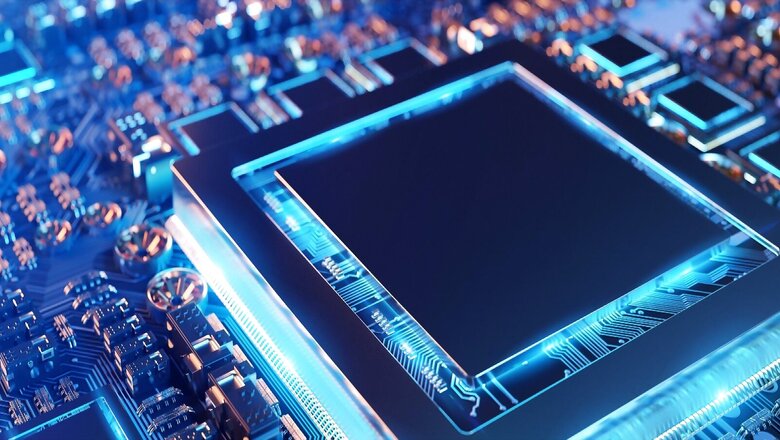
views
The chip-making business is extremely crucial and a global game of billions of dollars. In this significant industry, the dominance has been restricted to only a few geographic locations till now.
But if you think that India’s entry into the global market will change the equation within a few years under the ‘Atmanirbhar Bharat’, and it will compete with those dominators, such expectations may disappoint you.
First of all, it should be understood that design technology plays a key role in this dominance game. Yes, there are some indigenous companies in the business, which are in the start-up stage and making chips, maybe not for your iPhone or laptop. One such company was from Bengaluru, which was recently acquired by Tata.
So, why don’t we just start with design? It is not that India doesn’t have a design talent pool. Global leaders have accepted that Indian design engineers are very skilled and competent. But, at the moment, they are mostly working for overseas companies because there is an already developed chip-making ecosystem.
Secondly, the game in which countries like US, China and Taiwan are competing is not about making older-generation chips. They are in the advanced microchip-making race and some argue that India is not even close to the starting line. This is probably because we are years behind since this whole game began in the 1950s when US engineers first invented a semiconductor chip with four transistors.
Additionally, we have just started talking about chip-making once again, after a devastating fire incident at the 100% state-owned Semiconductor Complex Ltd, which started production in 1984, crushed the indigenous dream. However, the mysterious fire incident needs to be discussed separately.
From the current technology perspective, what should be understood is that transistors give chips their functionality and the current state of the art is 3 nanometres. Why size does matter because the smaller the transistors, the more you can fit into a chip, which means more computing power. Similarly, smaller the size, the lesser power consumption.
Here we need to take a look into what Intel’s former CEO Gordon Moore said. Known as the Moore’s Law: the number of transistors on a microchip doubles every two years.
So, with the Moore’s Law setting the clock, semiconductor companies are now aware that they have a predicted window of time, roughly two years, in which to develop the next generation of capability before their rivals almost certainly will. This means either they have to keep up or risk being left behind.
However, the production of such cutting-edge chips has become so expensive and complex that it is difficult to keep up. As a result, the number of manufacturers at the forefront of the industry has shrunk from more than 25 in 2000 to three — TSMC (Taiwan), Samsung (South Korea) and Intel (US).
Only a few companies are making such leading-edge chips because billions of dollars are needed to build just one such factory and the plant needs to be run 24/7 to produce hundreds of millions of devices per year, making sure they are getting sold at a premium price. If that doesn’t happen companies will lose money.
Considering this factor, one side of the aisle says, if India wants to truly indigenise the manufacturing process, it needs an uninterrupted power supply, reliable electricity, quality engineers who need to be retrained and years of R&D in terms of design.
Also, it is said along with ATMP (assembly, testing, marking, and packaging) to achieve a complete Atmanirbhar semiconductor ecosystem, material import needs to be eliminated.
However, China also wants to be self-reliant on the tech that powers supercomputers to a toaster and the CCP government has been giving it the same importance to Made in China 2024 initiative just as it gave it to the atom bomb. But still, they are unable to keep up with US and Taiwan because of innovation and R&D gaps when it comes to cutting-edge chips.
The industry believes that in the case of India, Atmanirbhar is not a myth but we have to give away the thought that we will beat the big sharks within a few years. Rather, it is said as India is starting from the zero level, it should begin with designing and manufacturing older generations of chips to create the base of the indigenous ecosystem at a time when the government is doing their part to encourage more people.
Once the base is ready, such Made in India chips are used in several other electronic products, then we can think about working on indigenous advanced logic chips, which are much more complex and expensive that give computers and smartphones their intelligence.
Also, people hope that this could be India’s other Maruti Suzuki moment—when the Japanese company began manufacturing in the country and soon Tata came with India’s first indigenously designed and manufactured car. Now, India has several indigenous automakers and has surpassed Japan to become the third largest auto market globally.
In terms of semiconductors, complete self-reliance may take 10 years or more but with global companies, the opportunity for indigenous ecosystem development is expected to come to Indian soil. Because of this, more people will learn about the technology and the government’s chip schemes will also help them compete at a global level in the coming years.
Read all the Latest Tech News here

















Comments
0 comment